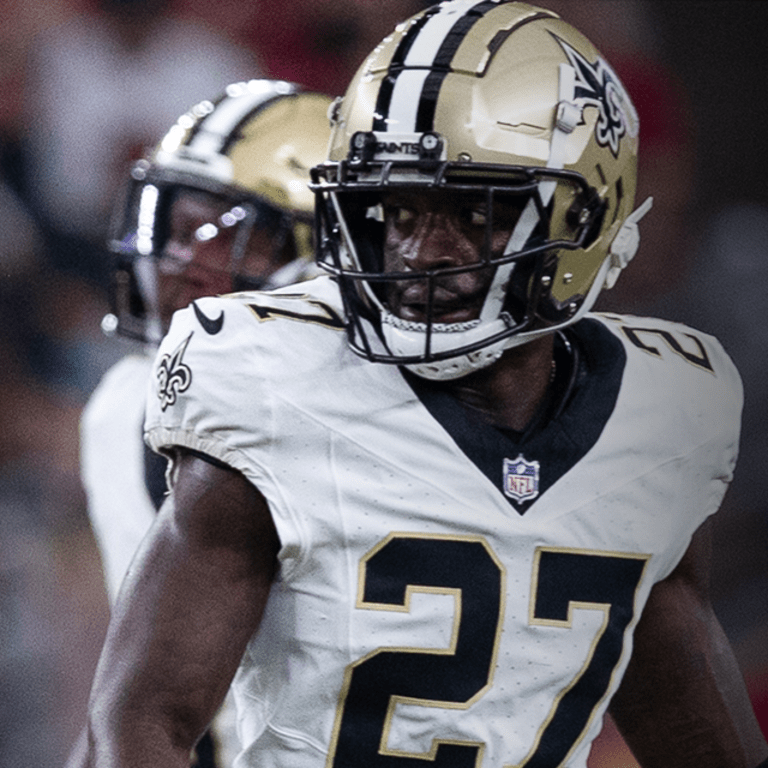Introduction to the DB Football Position
Understanding what is a db football position involves is crucial for grasping the game’s defense tactics. DB, short for Defensive Back, is a term used in American football. A DB is a player who defends against the passing plays from the offense. The DB’s main task is to prevent wide receivers from catching the ball during plays. They also monitor the back end of the defense, ready to tackle any player who has grabbed a pass. The position demands speed, agility, and sharp mental acuity.
DBs often find themselves in one-on-one matchups. Hence, they must possess excellent coverage skills to succeed. Generally, a DB will shadow an offensive player, known as ‘man-to-man’ coverage, or defend a zone area of the field. In the ‘zone’ coverage method, interceptions are a strong possibility. These dynamic roles make the DB position a backbone of the defensive squad. Effective DBs can change the course of the game through their actions. Whether by knocking down a crucial pass or making an interception, their impact is significant. Anyone hoping to excel as a DB must understand and embrace the complexities of this vital football role.

Roles and Responsibilities of a DB
The roles and responsibilities of a DB, or Defensive Back, are varied and vital to a defense’s success in football. A DB’s core task is to defend against offensive passing. They need to ensure that receivers do not make successful catches. In fulfilling this duty, a DB has several key responsibilities:
- Man-to-Man Coverage: In this role, a DB shadows a specific receiver, aiming to prevent successful receptions. The one-on-one nature of this task requires great footwork and awareness.
- Zone Coverage: Here, a DB guards a designated area on the field, rather than a particular player. This strategic position enhances the chance for interceptions, as a DB can read the quarterback’s intentions over a broader range.
- Support Run Defense: When an offensive play turns out to be a run, a DB must swiftly adjust to tackle the player carrying the ball, protecting against long runs.
- Ball Skills: This involves knocking down passes, intercepting the ball, and sometimes punching it out of a receiver’s hands. These actions prevent an offense from gaining crucial yardage and can even turn the tide of a game.
- Communication: Clear and consistent communication is a responsibility as well. A DB must coordinate with linebackers and other members of the secondary to ensure coverage is tight. Miscommunication can result in broken plays leading to touchdowns.
- Read Plays: Understanding and anticipating the offensive play is crucial. A DB must recognize patterns and react quickly to disrupt the play.
These roles and responsibilities define what is a db football player’s contribution to the team’s defense. Mastery of these elements is key to the success of a DB on the field.

Essential Skills for a DB
To master the DB football position, one must develop a repertoire of skills. Here’s a quick rundown of the essential skills needed:
- Speed and Agility: Quick movements help in covering receivers and closing in on the ball.
- Footwork: Precise steps and balance enable tight man-to-man coverage and fluid movement across the zone.
- Hand-Eye Coordination: Important for batting down passes and making interceptions. Sharp coordination can make a big difference.
- Tackling: Secure and effective tackling prevents additional yards and ends plays decisively.
- Reading Offenses: DBs must anticipate plays, understanding patterns and quarterback habits.
- Resilience: Mental and physical toughness are needed to bounce back from tough plays.
Each of these skills is crucial for DBs to perform at their best. Training and commitment to improvement in these areas can make a significant impact on a player’s game time effectiveness.
Different Types of DBs in Football
In the realm of football, defensive backs (DBs) comprise several key positions. Each with distinct responsibilities. Here we break down the different types of DBs:
- Cornerbacks (CBs): These players guard the outer part of the field. They often engage in man-to-man coverage against wide receivers. Their agility allows them to follow quick directional changes.
- Safeties: Split into two sub-types, free safeties and strong safeties, they cover deep portions of the field.
- Free Safeties (FS): They play farther back in the secondary. Free safeties provide the last line of defense and excel in reading the quarterback.
- Strong Safeties (SS): Positioned closer to the line of scrimmage. Strong safeties aid in run defense and cover tight ends.
- Nickelbacks: They come into play in a nickel defense, a formation with five DBs. Nickelbacks cover an additional receiver or provide run support.
- Dimebacks: Similar to nickelbacks, but in a dime defense, which involves six DBs. They further reinforce coverage in passing situations.
Understanding what is a db football position encompasses is key for recognizing the strategic deployment of these players. Given that offenses vary their attacks, knowing the difference between types of DBs is essential for a defense’s adaptability and success.
Training and Drails for DBs
To excel as a DB, specific training routines are essential. Drills that improve speed, agility, and coverage skills are the cornerstone of a DB’s training regimen. Here’s how DBs can hone their craft:
- Speed Drills: These enhance a player’s acceleration and velocity across the field. Drills may include sprints, shuttle runs, and interval training.
- Agility Ladders & Cones: Used for improving footwork and quick directional changes, crucial for man-to-man coverage.
- Ball Drills: To refine hand-eye coordination, players practice catching balls from various angles.
- Tackling Practice: DBs work on form tackling. This ensures they can bring down opponents effectively.
- Film Study: Reviewing game footage helps DBs to read offenses better and recognize patterns.
- Communication Exercises: Practicing with the team promotes better on-field communication.
- Endurance Training: Longer runs and stamina drills prepare DBs for the physical demands of a full game.
Combining these with regular skills practice ensures DBs are game-ready. Staying disciplined in training is key to mastering what is a db football position.

Understanding Defensive Strategies
Effective DBs must grasp complex defensive strategies to excel in their role. To truly understand what is a db football position, one must recognize how DBs fit within a team’s defense scheme. Their work goes beyond individual assignments to synergize with the team’s overall strategy. Here’s how defensive strategies come into play for DBs:
- Understanding Schemes: DBs should know whether the team uses a man, zone, or hybrid defense. Each scheme determines the DB’s primary focus.
- Adapting to Offenses: Offenses often switch tactics, and a DB must adjust quickly. Recognizing formations can clue a DB into the kind of play coming.
- Positioning and Leverage: Proper positioning can give a DB the advantage. They must know where to stand to best defend passes or support the run.
- Knowing Opponents: Studying opponents’ tendencies can give DBs an edge. Knowing which receiver tends to what helps predict play patterns.
- Collaborating on the Fly: DBs and their teammates must make split-second decisions. They change coverages based on what they see before the snap.
- Use of Film Study: Film study is critical to understand other teams’ offensive strategies. DBs learn to anticipate what an offense might do in various situations.
By mastering these defensive strategies and continually honing their skills, DBs make crucial contributions to their team’s success. This understanding shapes a DB’s decision-making on the field, enabling them to prevent scores and secure wins.
Key Attributes of Elite DBs
Elite DBs in football embody a unique set of attributes that elevate their game.
- Instinctual Play: Top DBs anticipate plays, often moving before the ball is thrown. They trust their instincts.
- Leadership: They lead by example and communicate effectively, ensuring the team is cohesive and alert.
- Consistency: Elite DBs perform at a high level game after game. Their performance is reliable.
- Work Ethic: They train tirelessly, honing their physical and mental skills regularly.
- Physicality: Despite their need for speed, elite DBs are also strong and can handle physical play.
- Intelligence: They have a deep understanding of football, which allows quick decision-making during complex plays.
- Discipline: Top DBs adhere to their training and diet. They avoid mistakes on and off the field.
- Confidence: They remain confident in their abilities, even when facing the most skilled opponents.
These attributes are not just about physical skills. They combine the mental toughness and the strategic thinking that define what is a db football player at the elite level. Merging these traits with the responsibilities and skills mentioned earlier can turn a good DB into a great one.
The Mental Aspect of Playing DB
The mental aspect of mastering what is a db football position is just as vital as the physical requirements. DBs face immense mental pressure during gameplay. They must make quick decisions and react to sudden changes. Let’s uncover the mental facets that are crucial for a defensive back:
- Quick Decision-Making: The ability to make fast choices is essential. A DB can’t hesitate or it might lead to a disadvantage on the field.
- Concentration: A DB must stay focused throughout the entire game. Successful play depends on unwavering attention the moment the ball is snapped.
- Memory: It is important to remember plays, routes, and formations. DBs study these before the game and recall them in crucial moments.
- Adaptability: The game changes swiftly, so DBs must adapt on-the-go. They adjust to different scenarios and opponent strategies quickly.
- Psychological Resilience: DBs experience tough moments, like a missed tackle or a completed pass. They need the mental strength to overcome these challenges and reset.
- Strategic Thinking: They plan their moves and predict the opponent’s actions. Understanding what lies ahead gives them a strategic edge.
- Self-Evaluation: After games, DBs reflect on their performance. They identify their strengths and areas for improvement.
In conclusion, the mental acuity of a DB is a game-changer. Elite DBs know their mind is as powerful as their body. They sharpen their mental skills to match their physical prowess. This complete approach to what is a db football position can distinguish great players from the rest.
